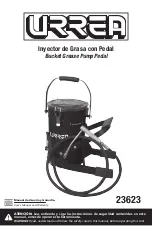
2050
User Guide
Infrastructure
The system utilizes the
GPS
satellite system,
L-Band
communication satellites, and a
worldwide network of
reference stations
to deliver real-time high precision positioning.
To provide this unique service, a global network of
dual-frequency
reference stations
, which
constantly receive signals from the
GPS
satellites as they orbit the earth are in operation.
Data from these
reference stations
is fed to two Network Processing Hubs / Centers located
in Torrance, California and Moline, Illinois where they are processed to generate the
differential corrections.
From the two Network Processing Hubs / Centers, the correction data is fed via redundant
and independent communication links to satellite uplink stations at Laurentides in Canada,
Goonhilly in England and Auckland in New Zealand for uplink to the geo-stationary
communication satellites.
The key to the accuracy and convenience of the
StarFire
system is the source of
GPS
corrections.
GPS
satellites transmit navigation data on two
L-Band
frequencies. The
reference stations
are all equipped with geodetic-quality,
dual-frequency
receivers. These
reference receivers decode
GPS
signals and send precise high quality
dual-frequency
pseudorange
and carrier phase measurements back to the Network Processing Hubs /
Centers together with the data messages, which all
GPS
satellites broadcast.
At the Network Processing Hubs / Centers, NavCom's proprietary
differential
processing
techniques used to generate real time precise orbits and clock correction data for each
satellite in the
GPS
constellation. This proprietary
Wide Area
DGPS
(
WADGPS
) algorithm is
optimized for a
dual-frequency
system in which
dual-frequency
ionospheric measurements
are available at both the reference receivers and the user receivers. It is the use of
dual-
frequency
receivers at both the
reference stations
and the user equipment together with the
advanced processing algorithms, which makes the exceptional accuracy of the system
possible.
Creating the corrections is just the first part. From our two Network Processing Hubs /
Centers, the differential corrections are then sent to the Land Earth Station (
LES
) for uplink
to
L-Band
communications satellites. The uplink sites for the network are equipped with
NavCom-built modulation equipment, which interfaces to the satellite system transmitter and
uplinks the correction data stream to the satellite that broadcasts it over the coverage area.
Each
L-Band
satellite covers more than a third of the earth.
Users equipped with a
C-Nav
precision
GPS
receiver actually have two receivers in a single
package, a
GPS
receiver and an
L-Band
communications receiver, both designed by
NavCom for this system. The
GPS
receiver tracks all the satellites in view and makes
pseudorange
measurements to the
GPS
satellites. Simultaneously, the
L-Band
receiver
receives the correction messages broadcast via the
L-Band
satellite. When the corrections
are applied to the
GPS
measurements, a
position
measurement of unprecedented real time
accuracy is produced.
C-30
Summary of Contents for 2050
Page 2: ...1 2 ...
Page 8: ......
Page 14: ...2050 User Guide This Page Intentionally left blank 6 ...
Page 17: ...2050 User Guide Figure 2 2050 Front View Figure 3 2050M Only Back View 2 9 ...
Page 22: ...2050 User Guide This Page Intentionally left blank 2 14 ...
Page 34: ...2050 User Guide This Page Intentionally left blank A 26 ...
Page 42: ...2050 User Guide This Page Intentionally left blank C 34 ...
Page 43: ...2050 User Guide C 35 ...
Page 44: ...2050 User Guide This Page Intentionally left blank C 36 ...
Page 58: ...2050 User Guide This Page Intentionally left blank C 50 ...
Page 60: ...2050 User Guide This Page Intentionally left blank C 52 ...
Page 62: ...2050 User Guide C 54 ...
Page 64: ...2050 User Guide C 56 ...
Page 65: ...2050 User Guide C 57 ...
















































